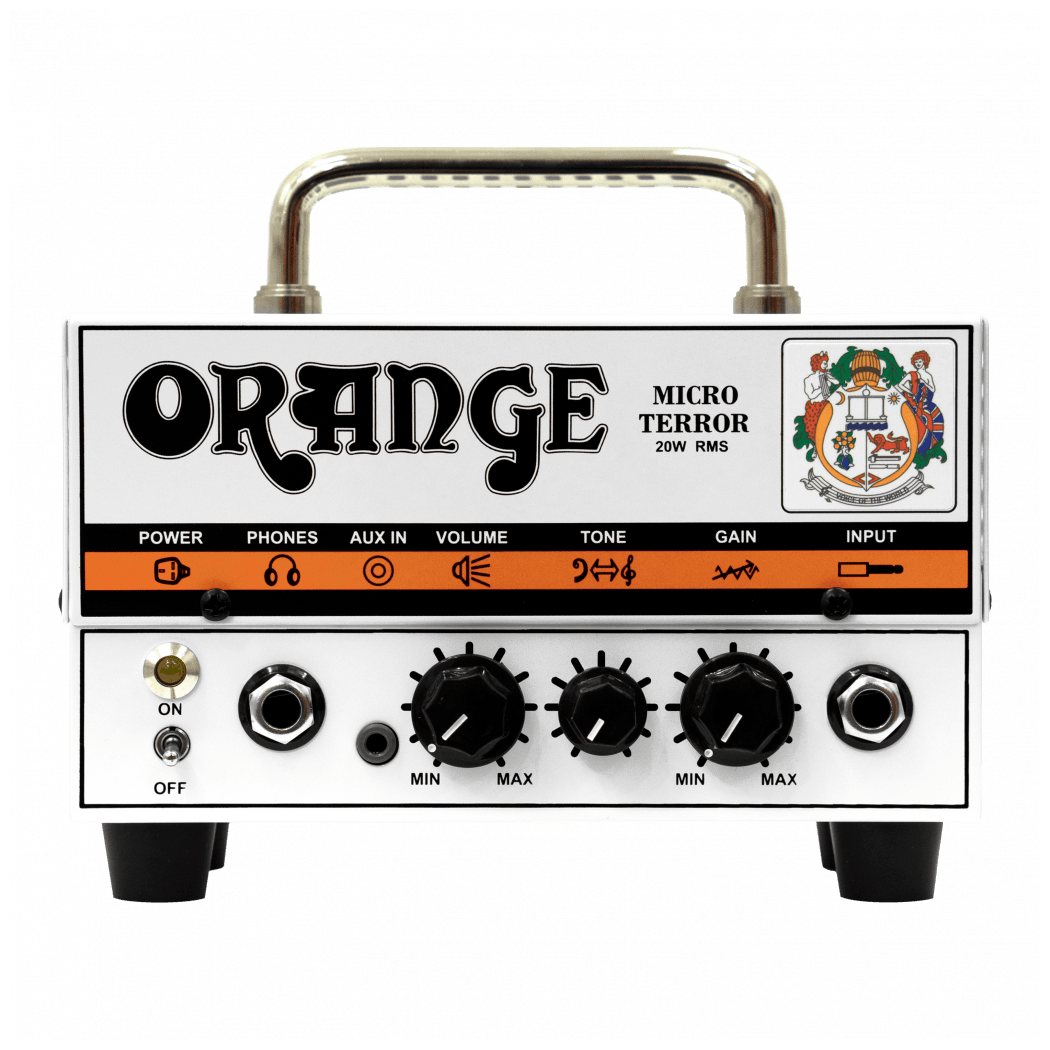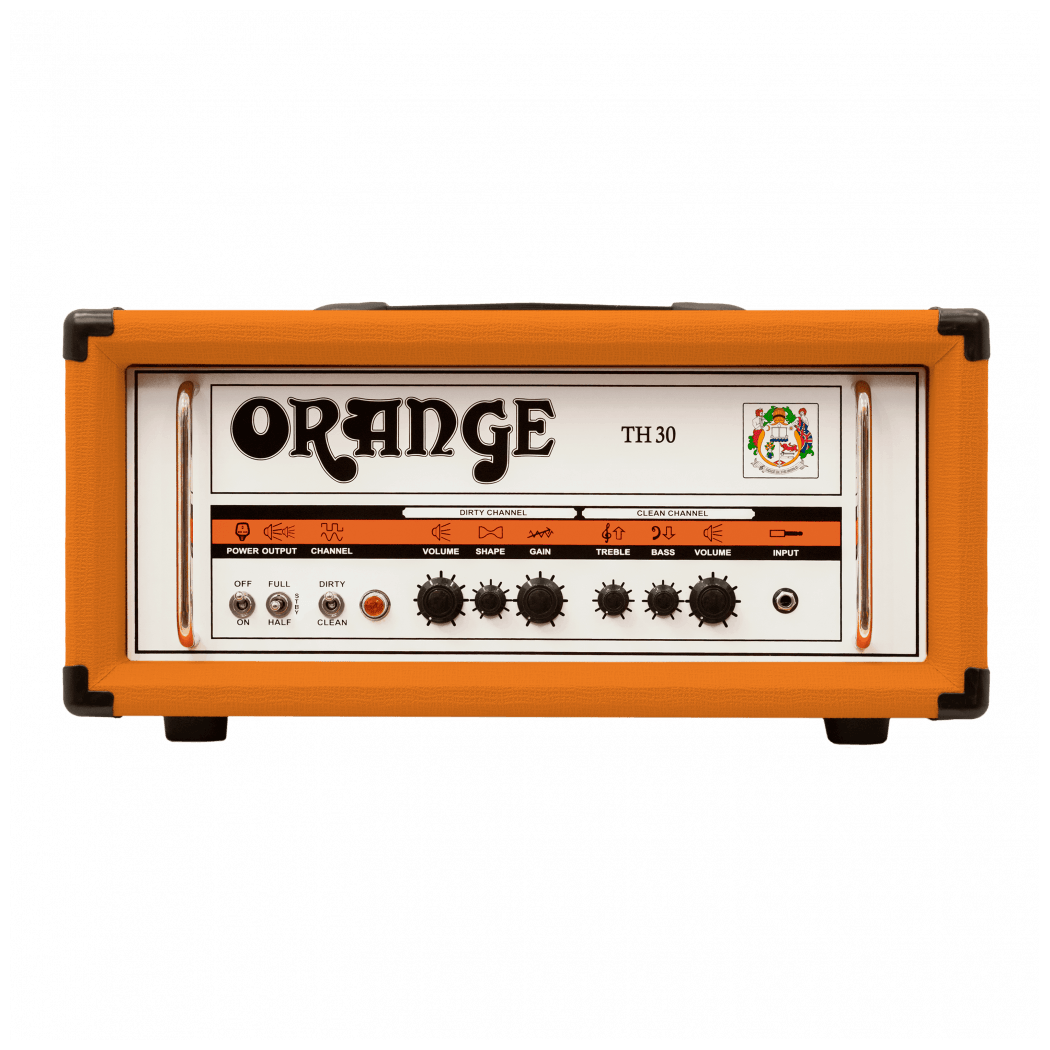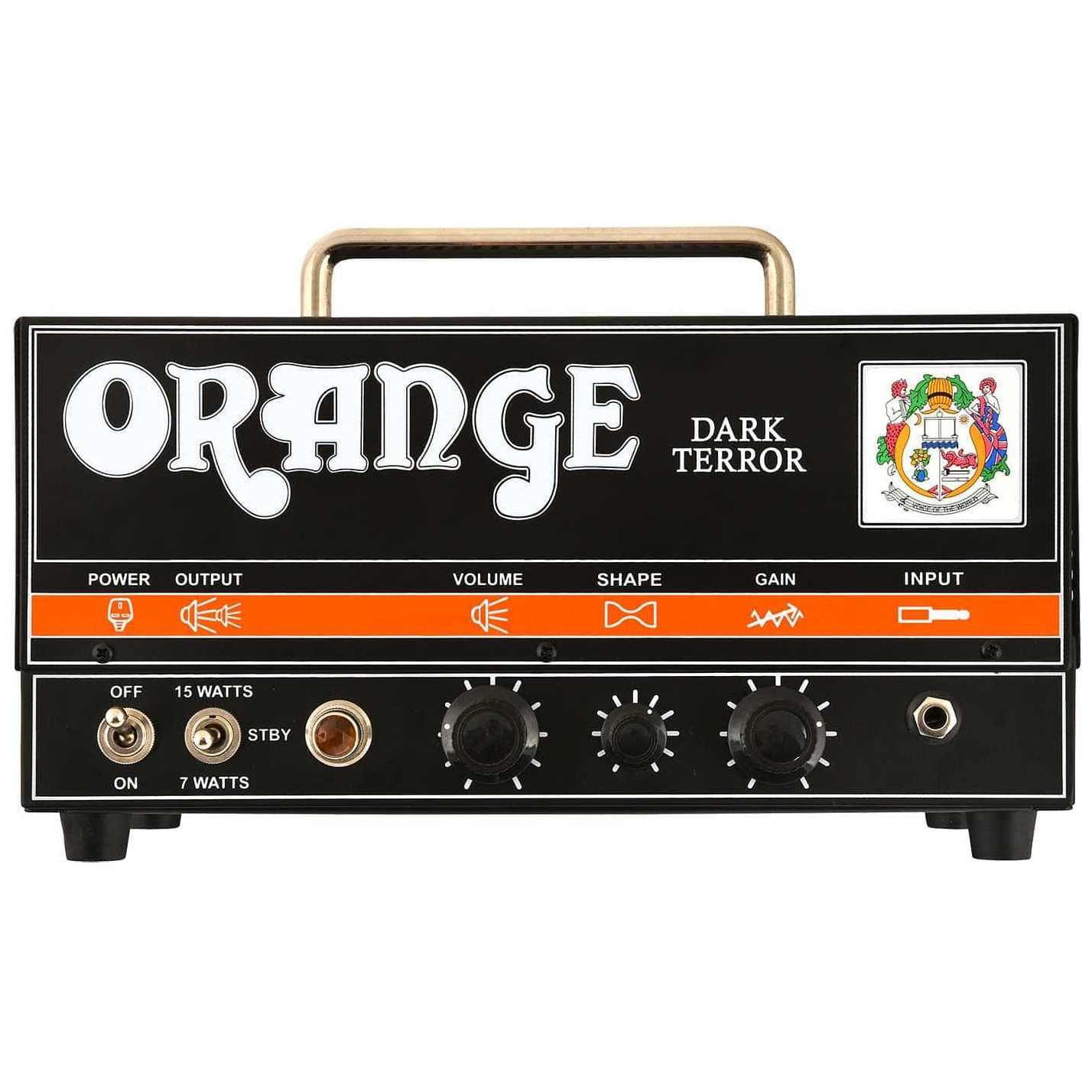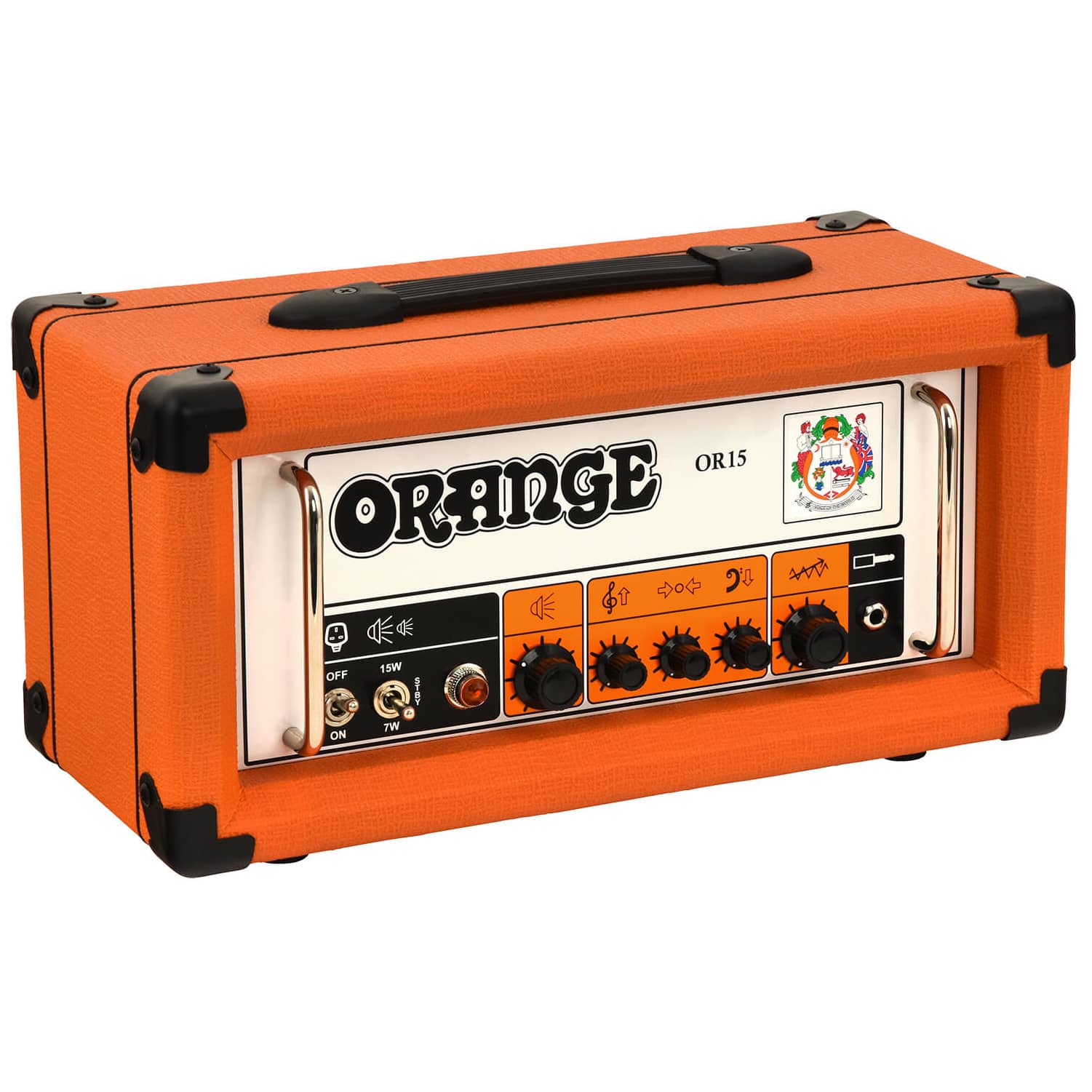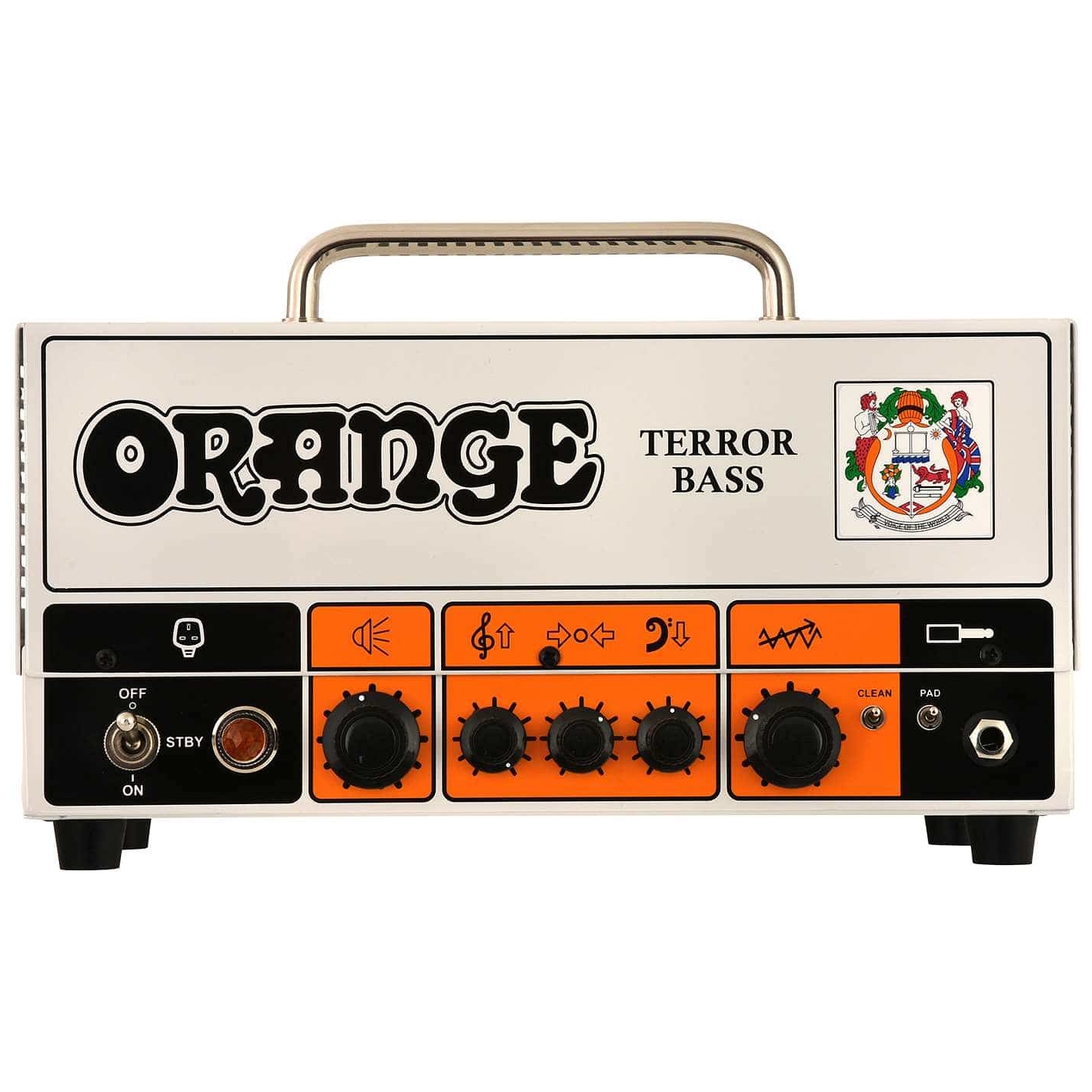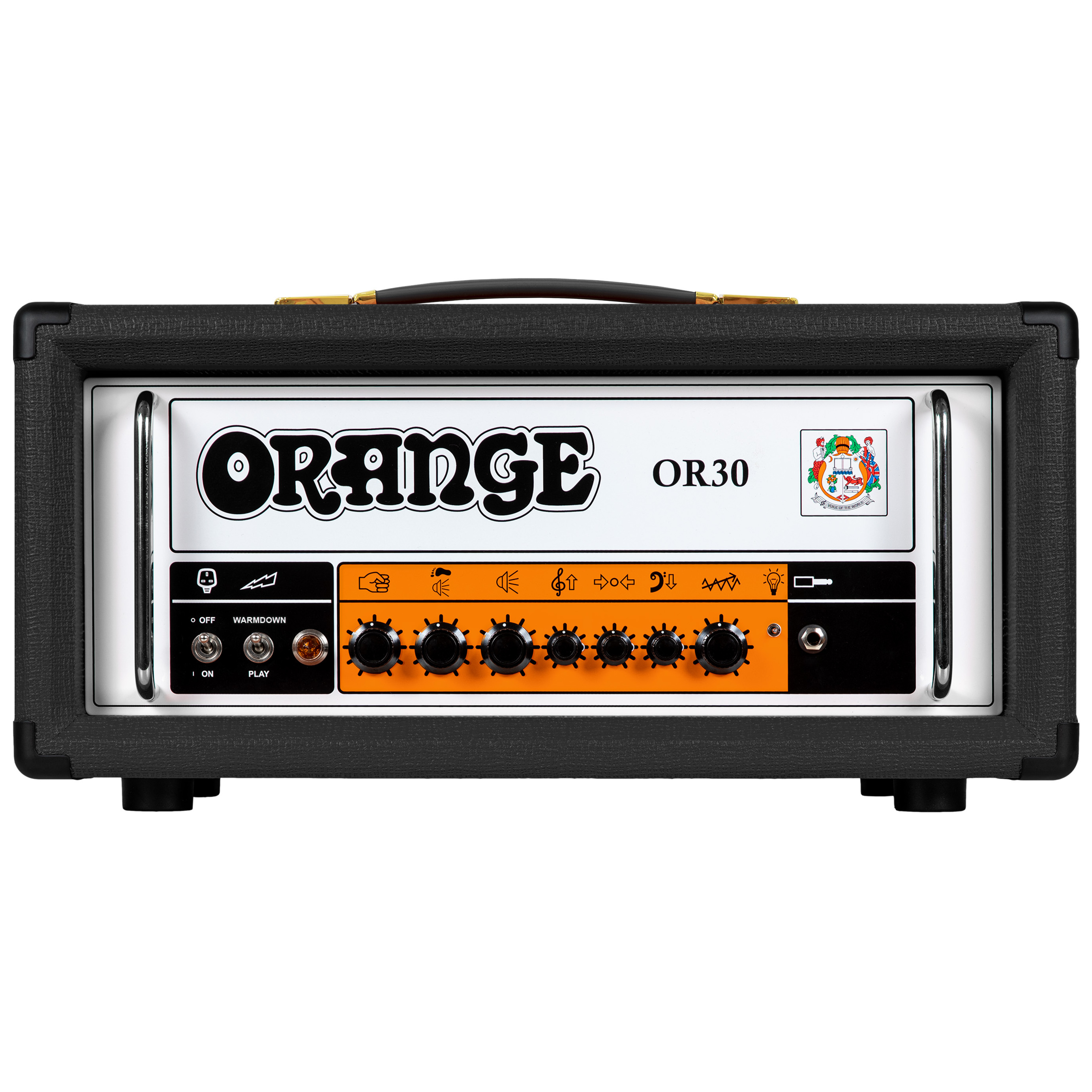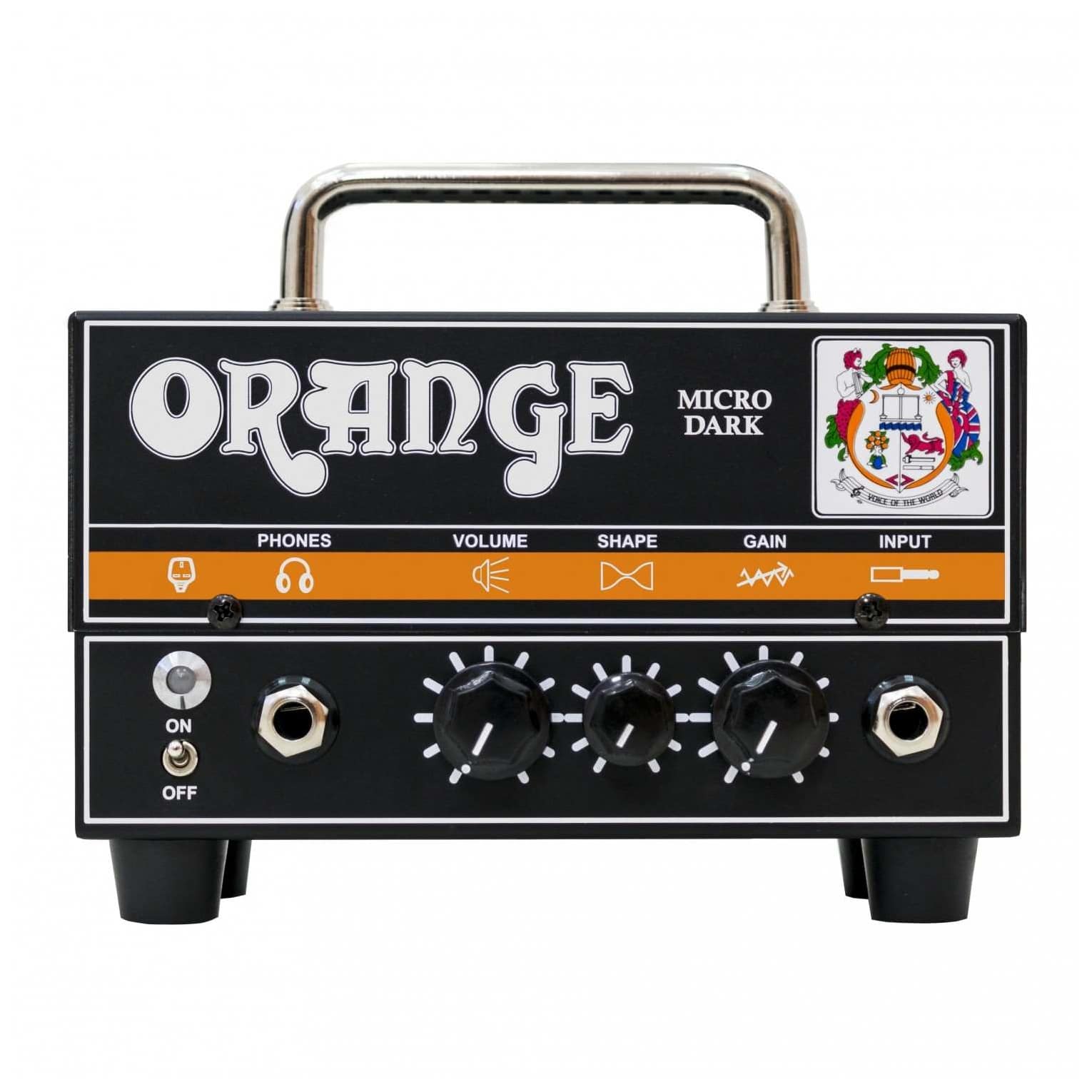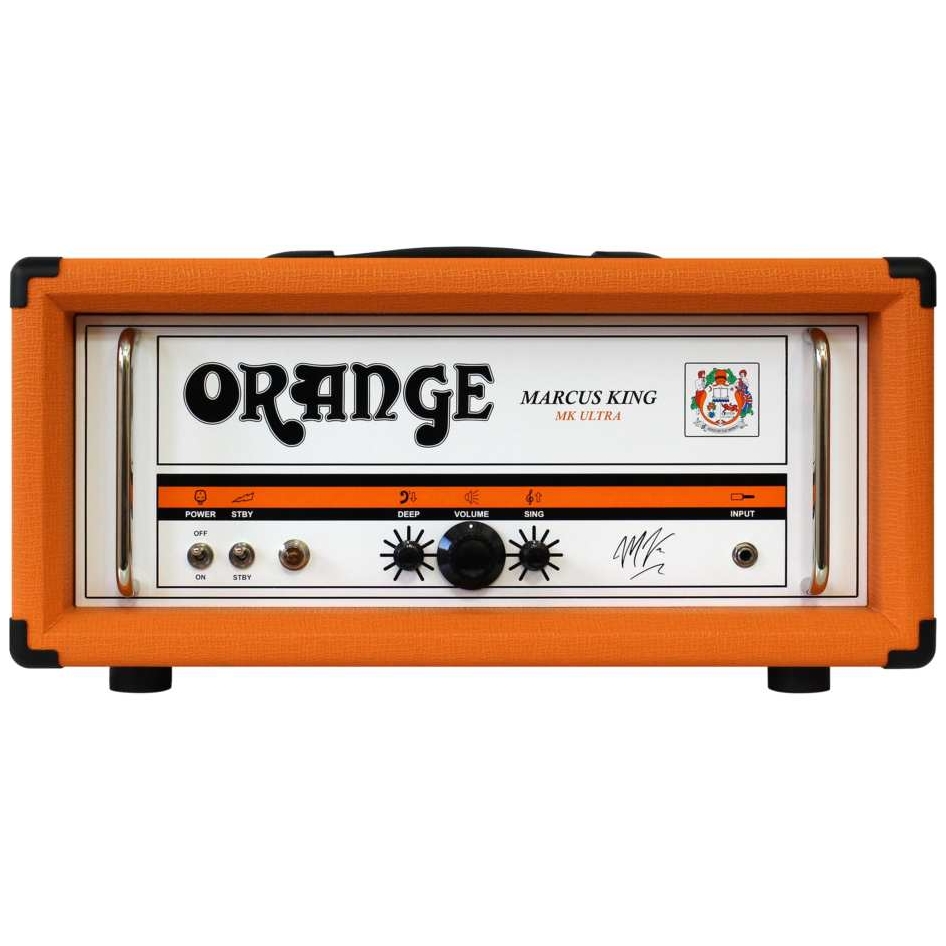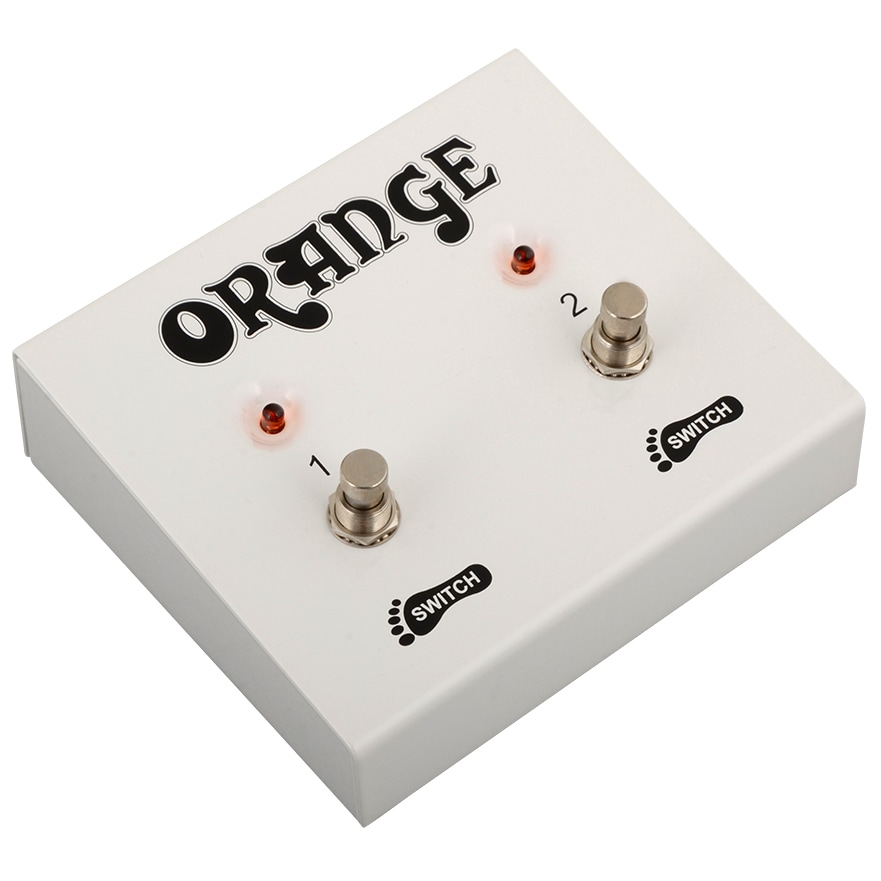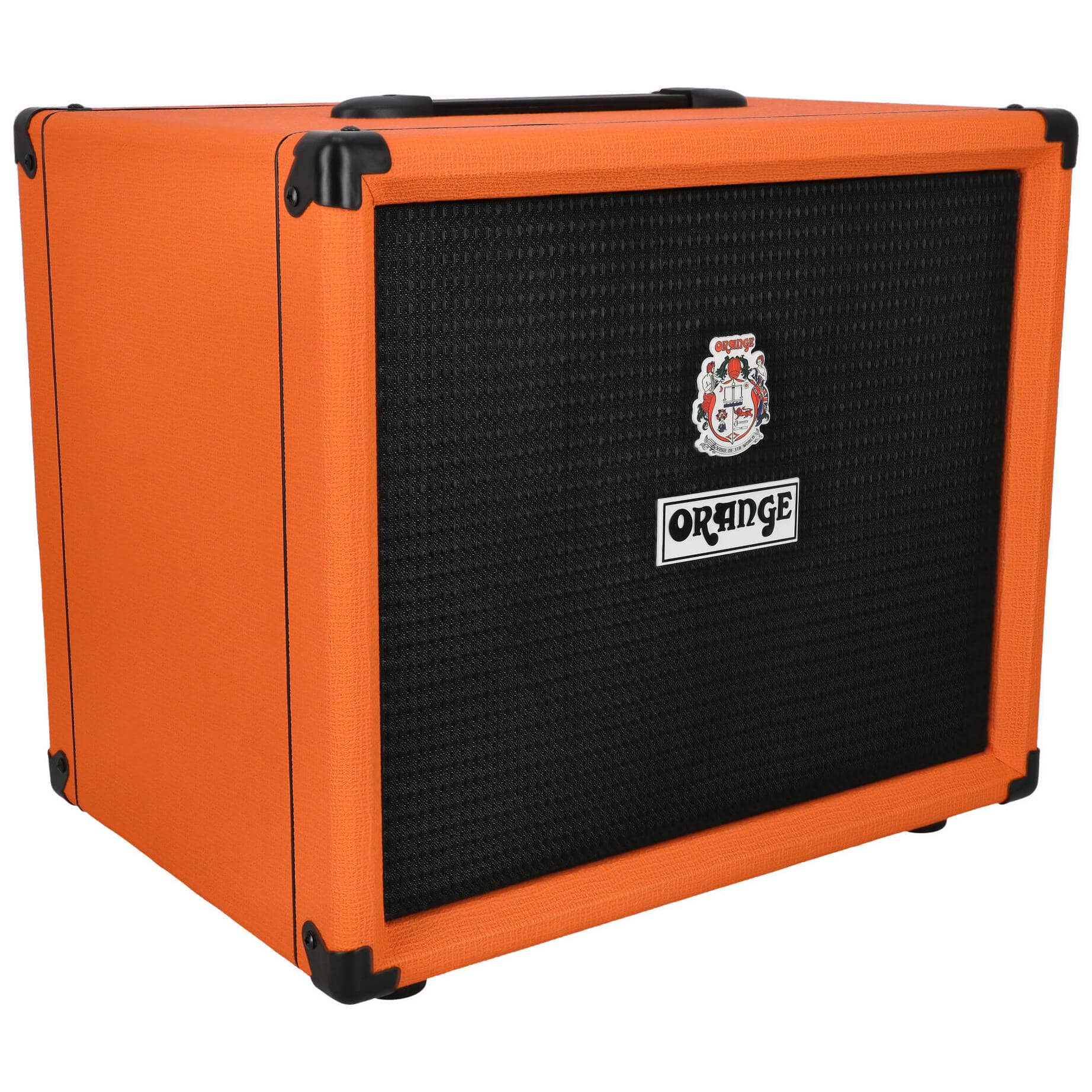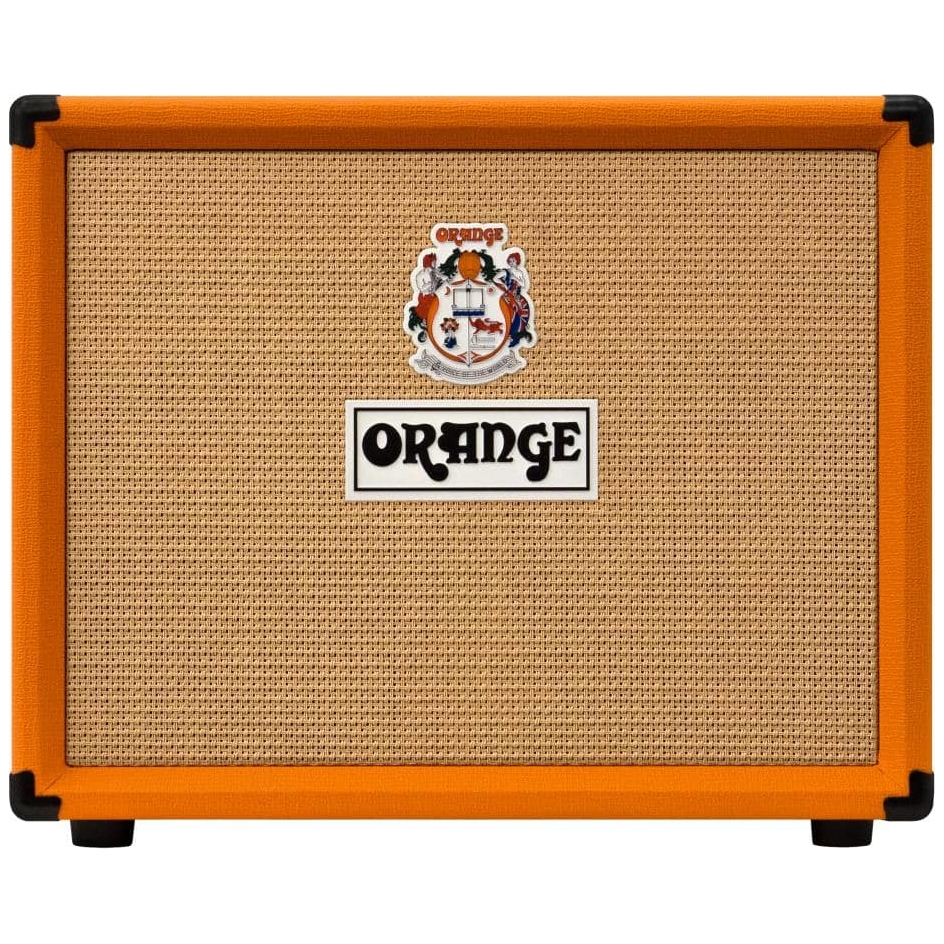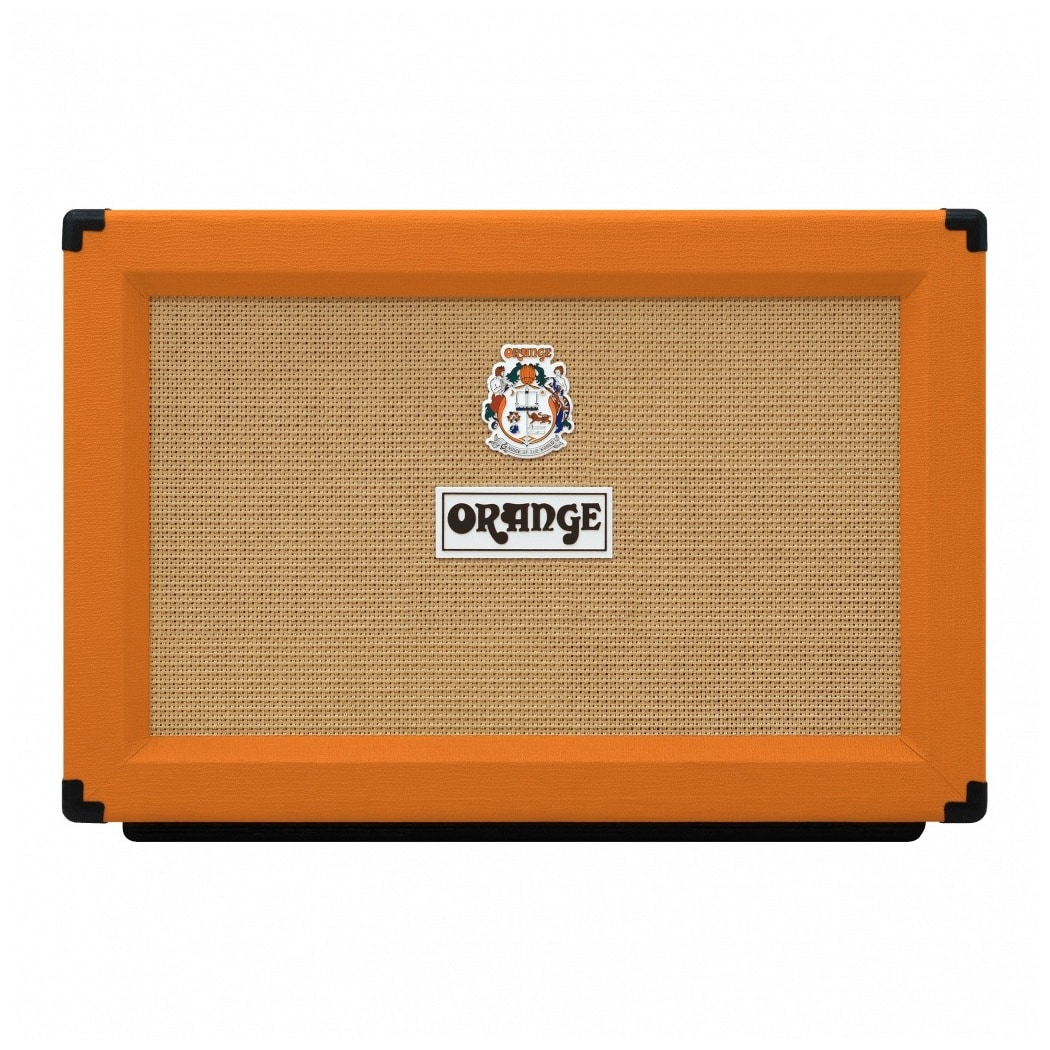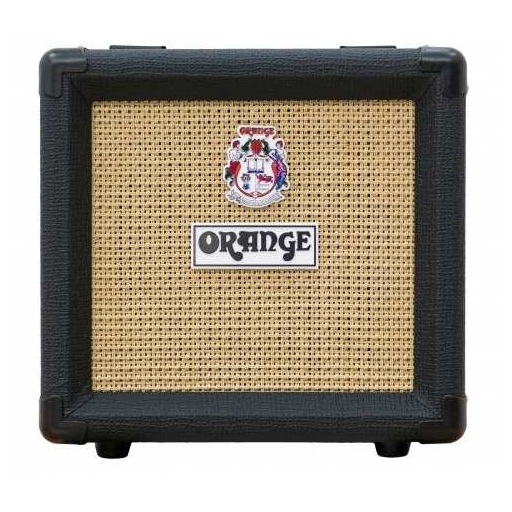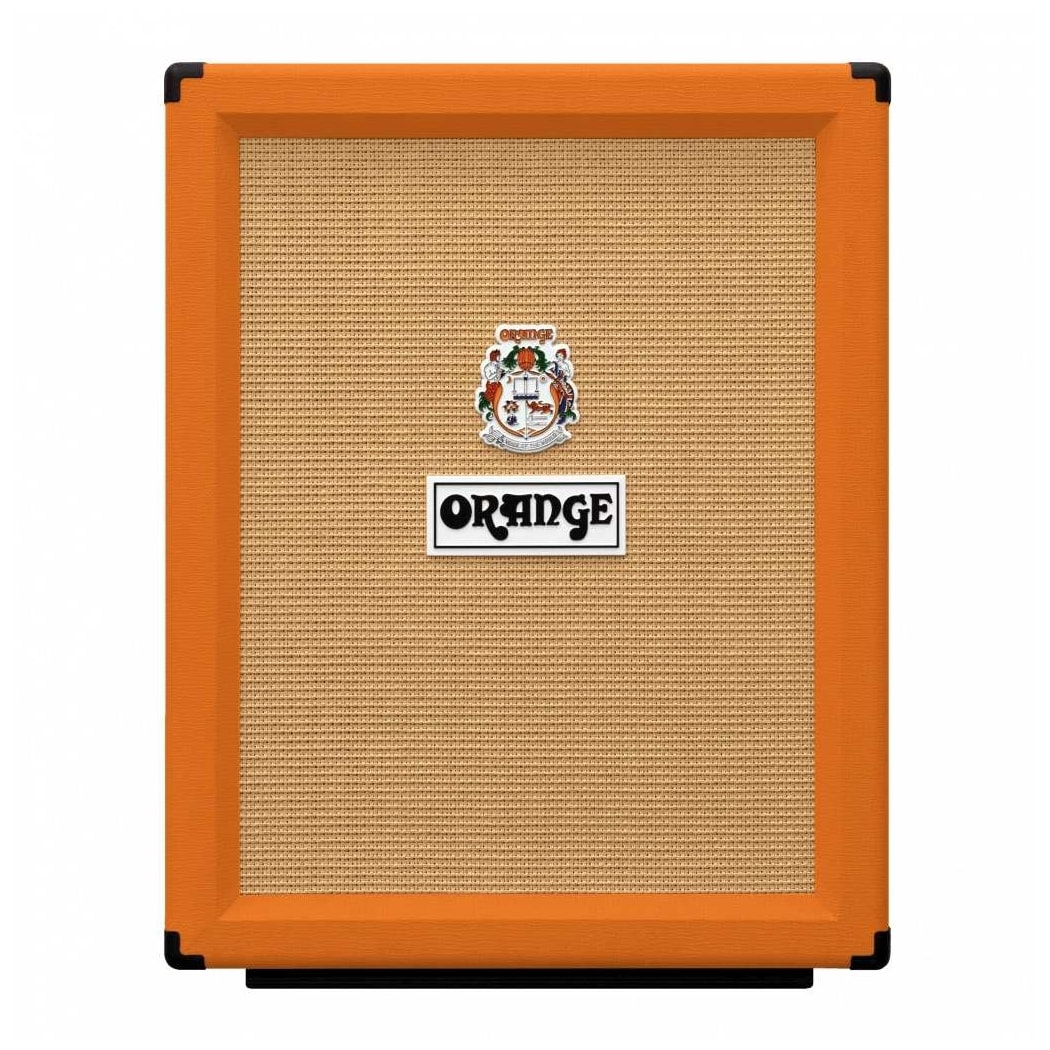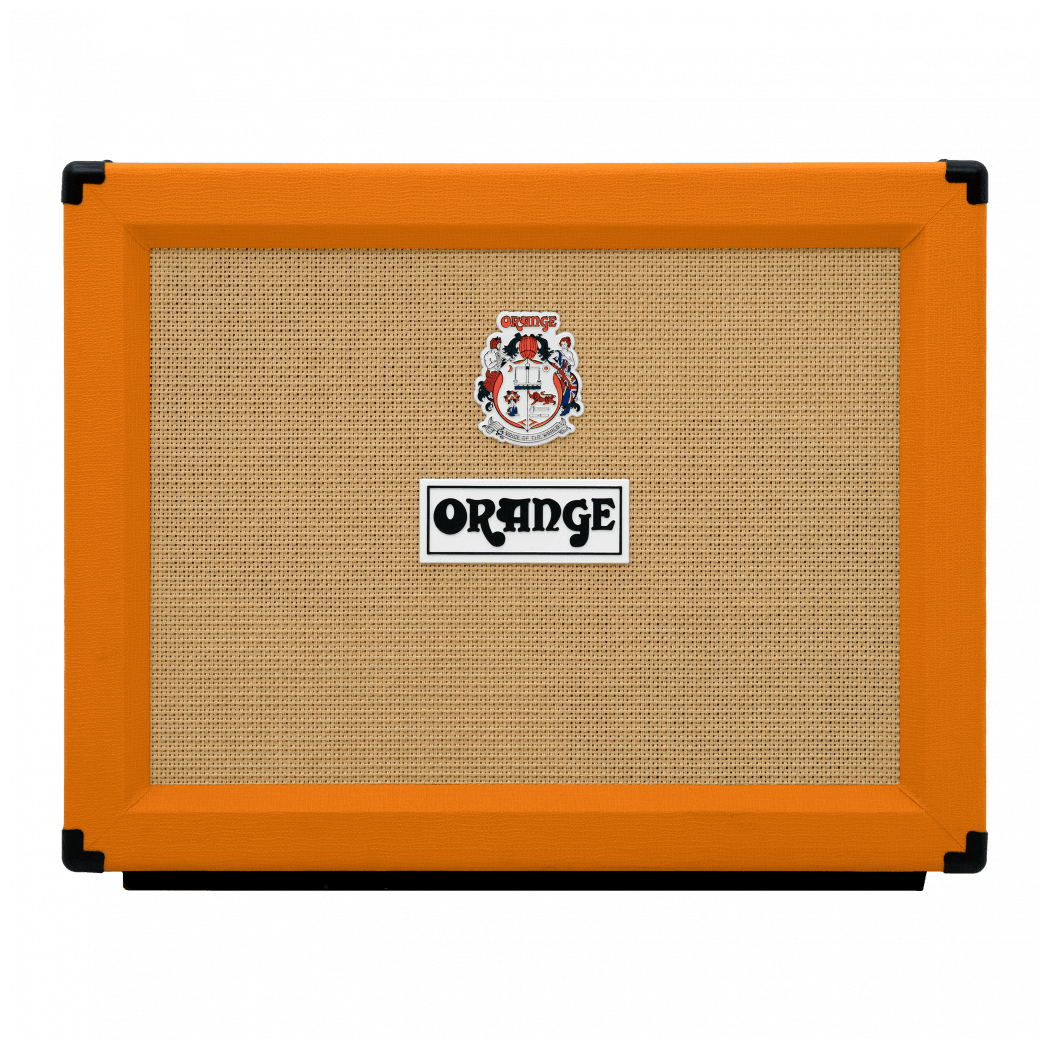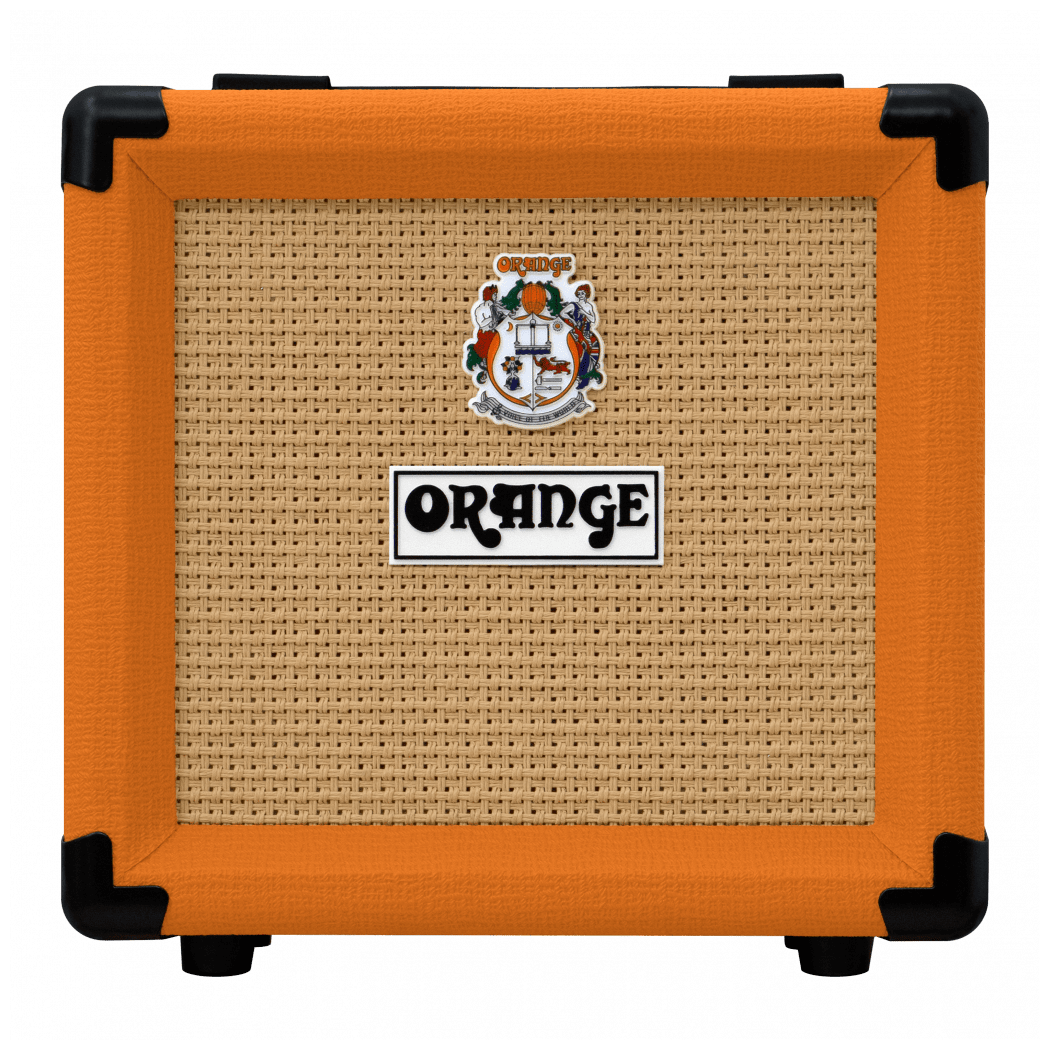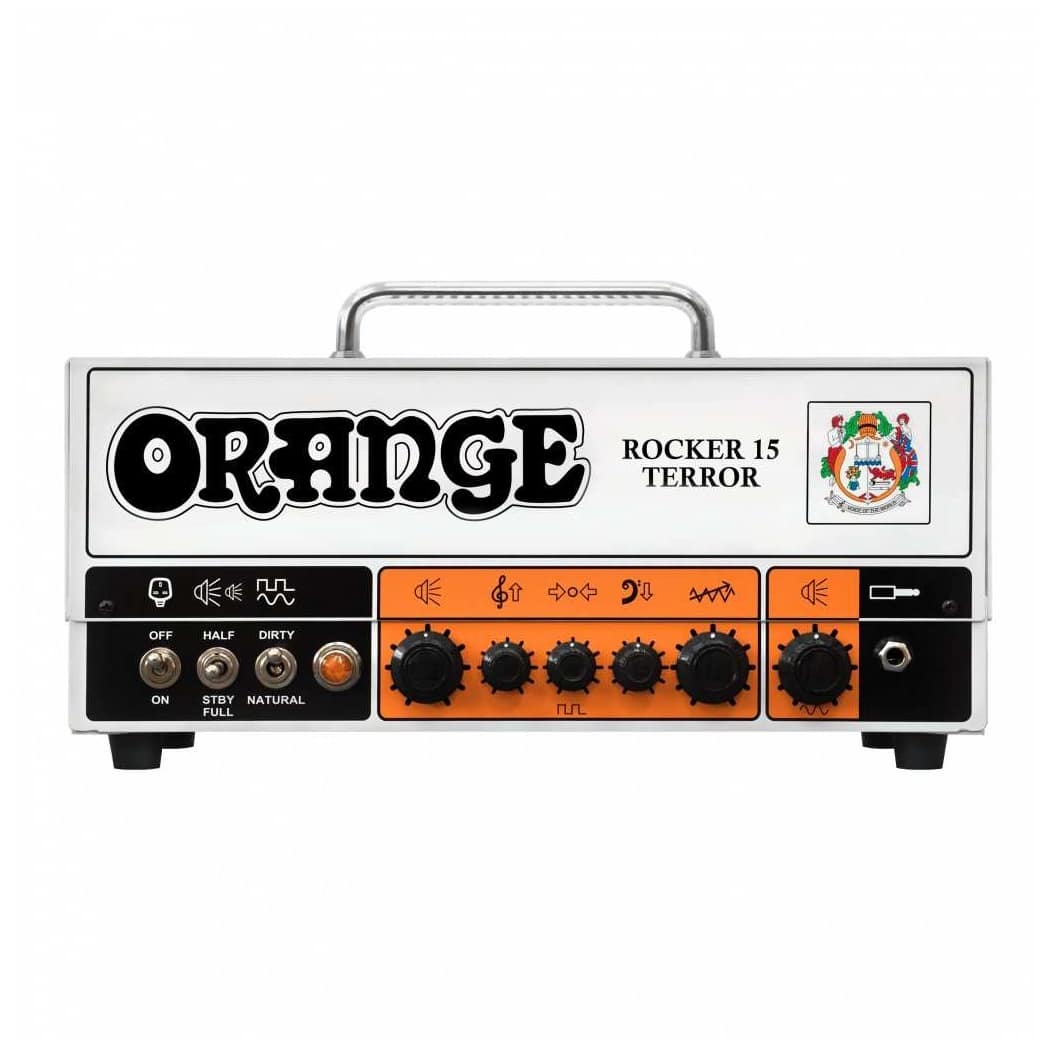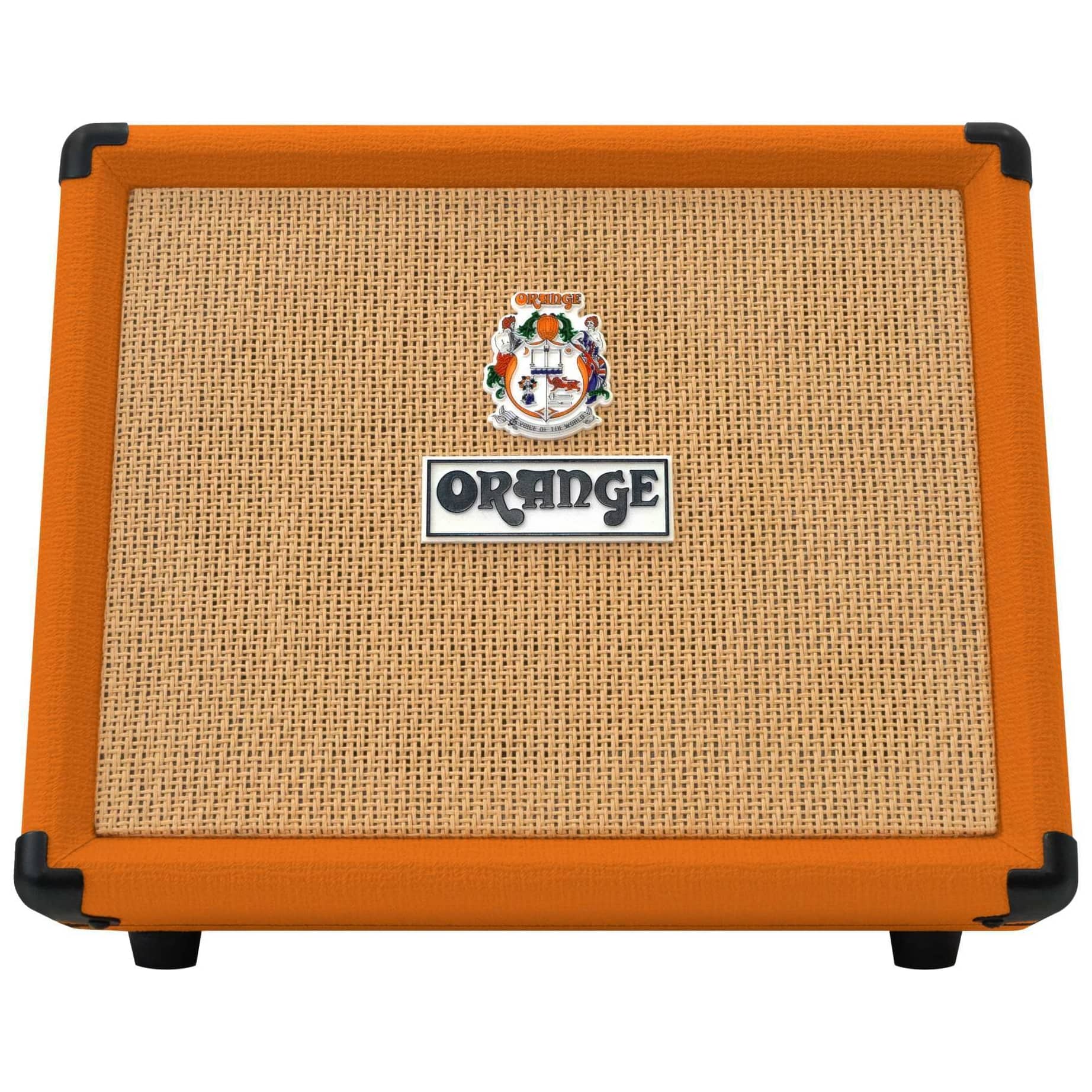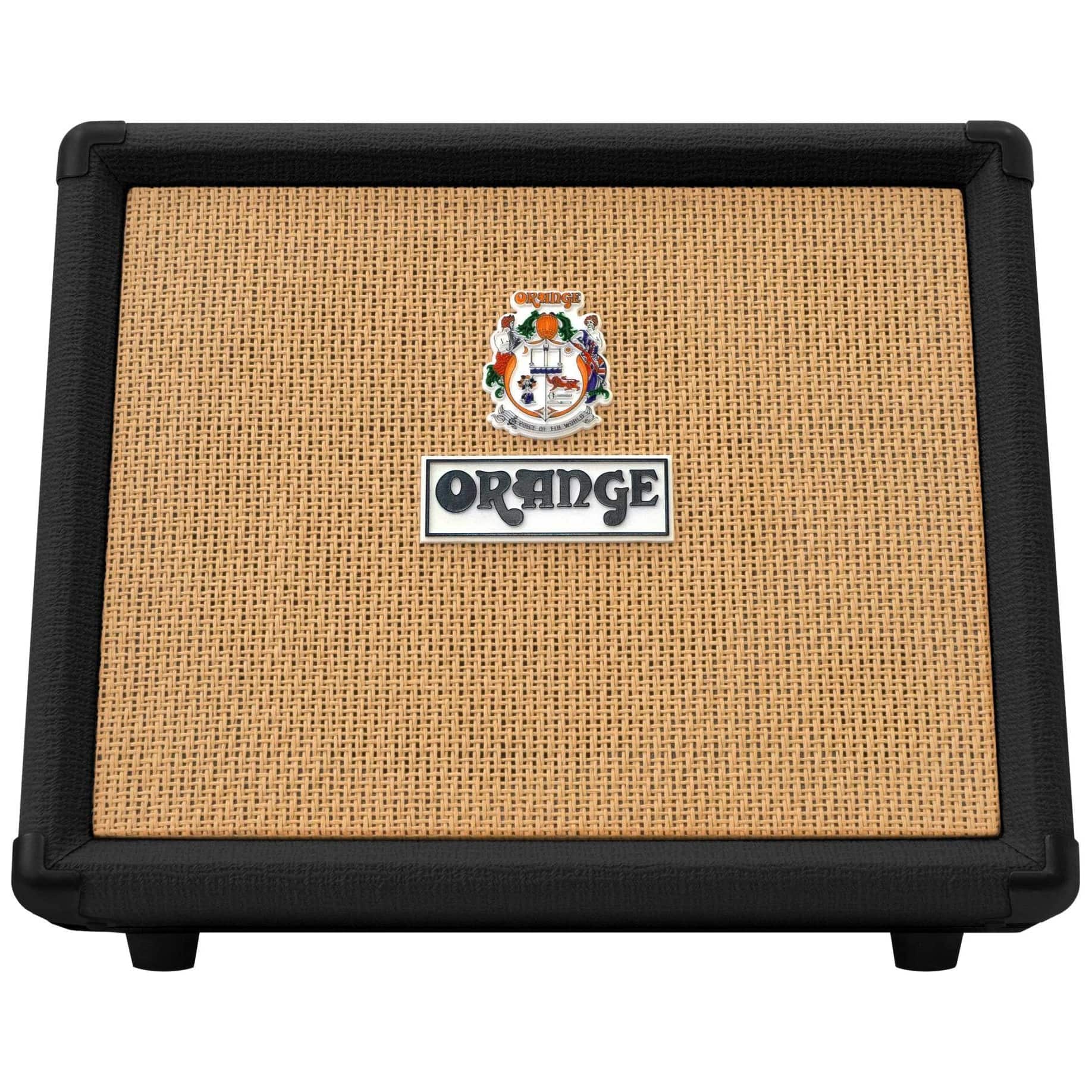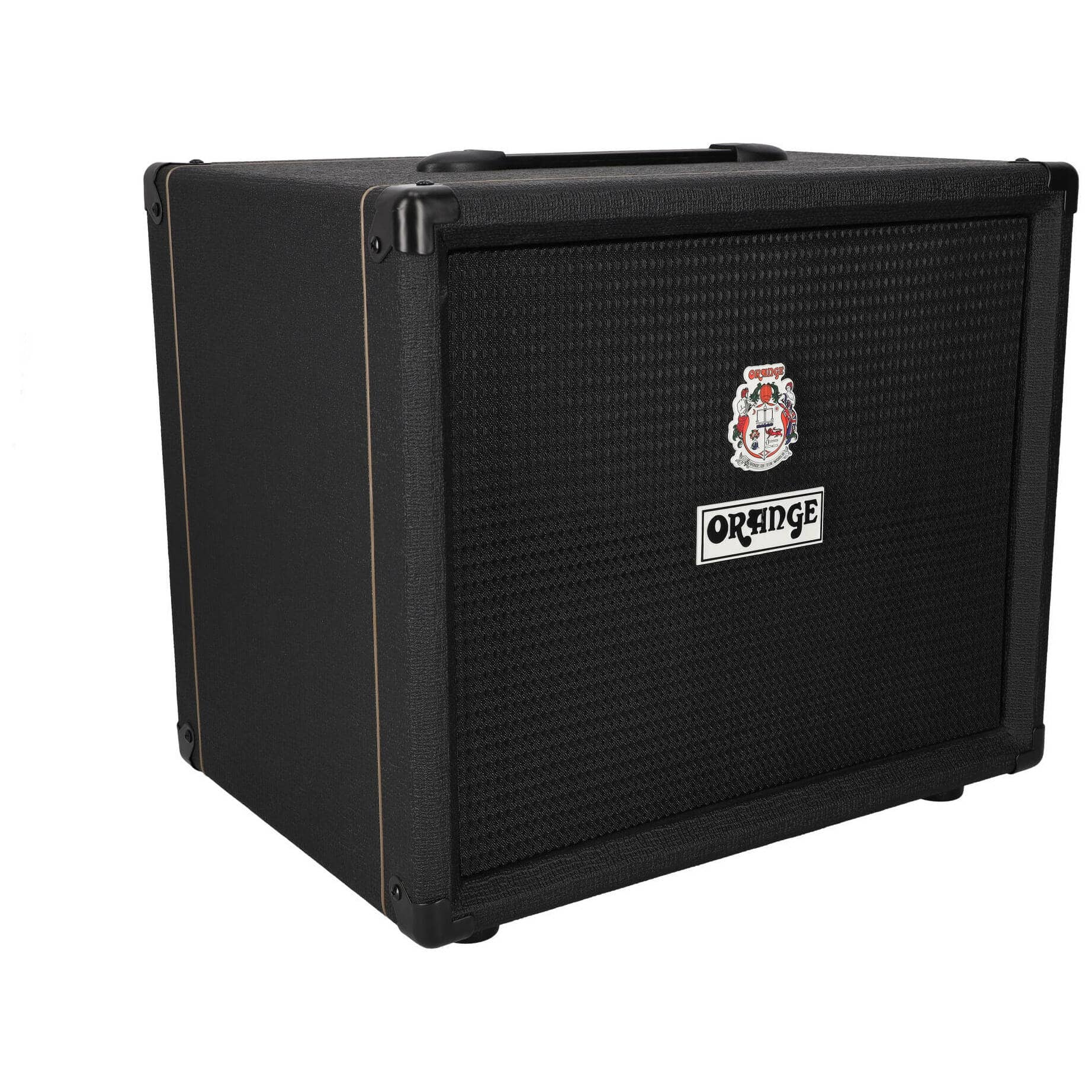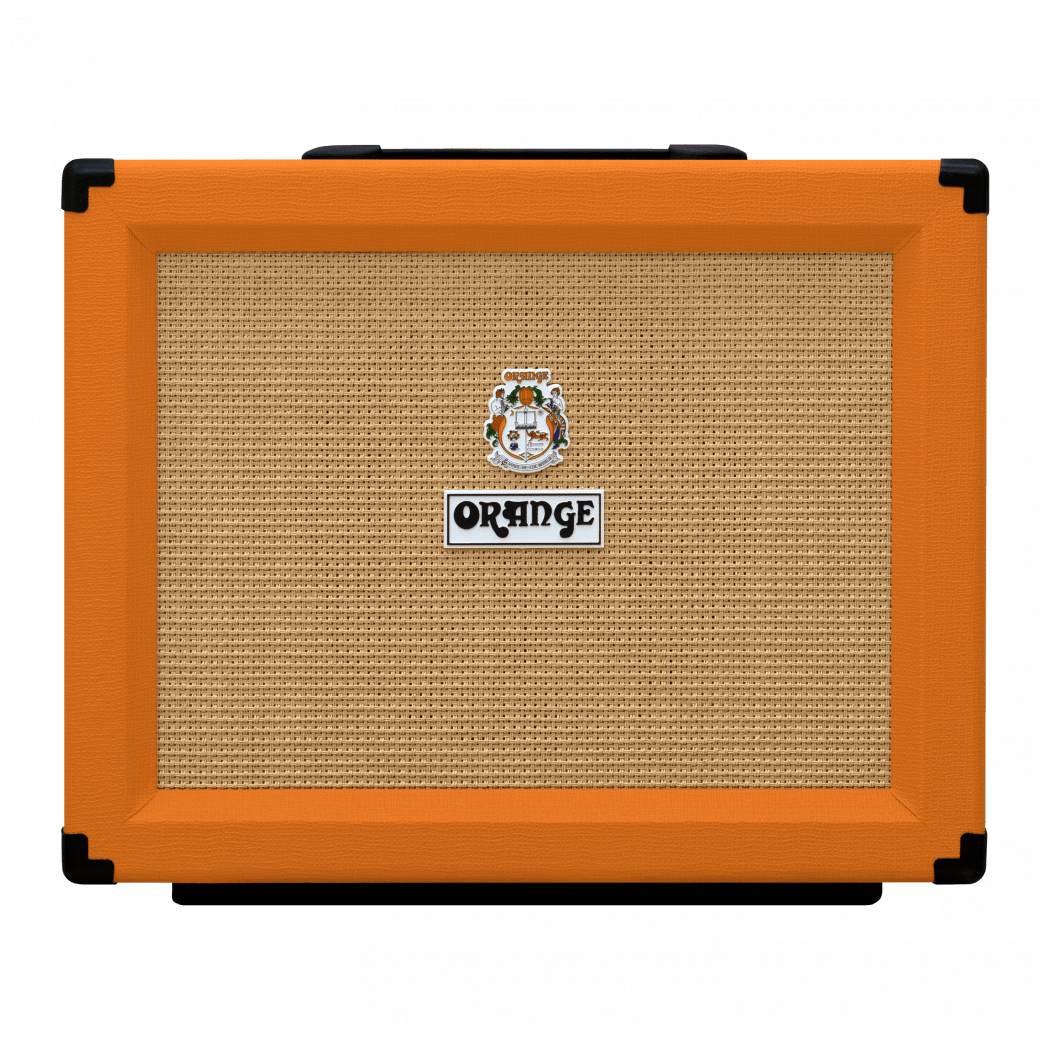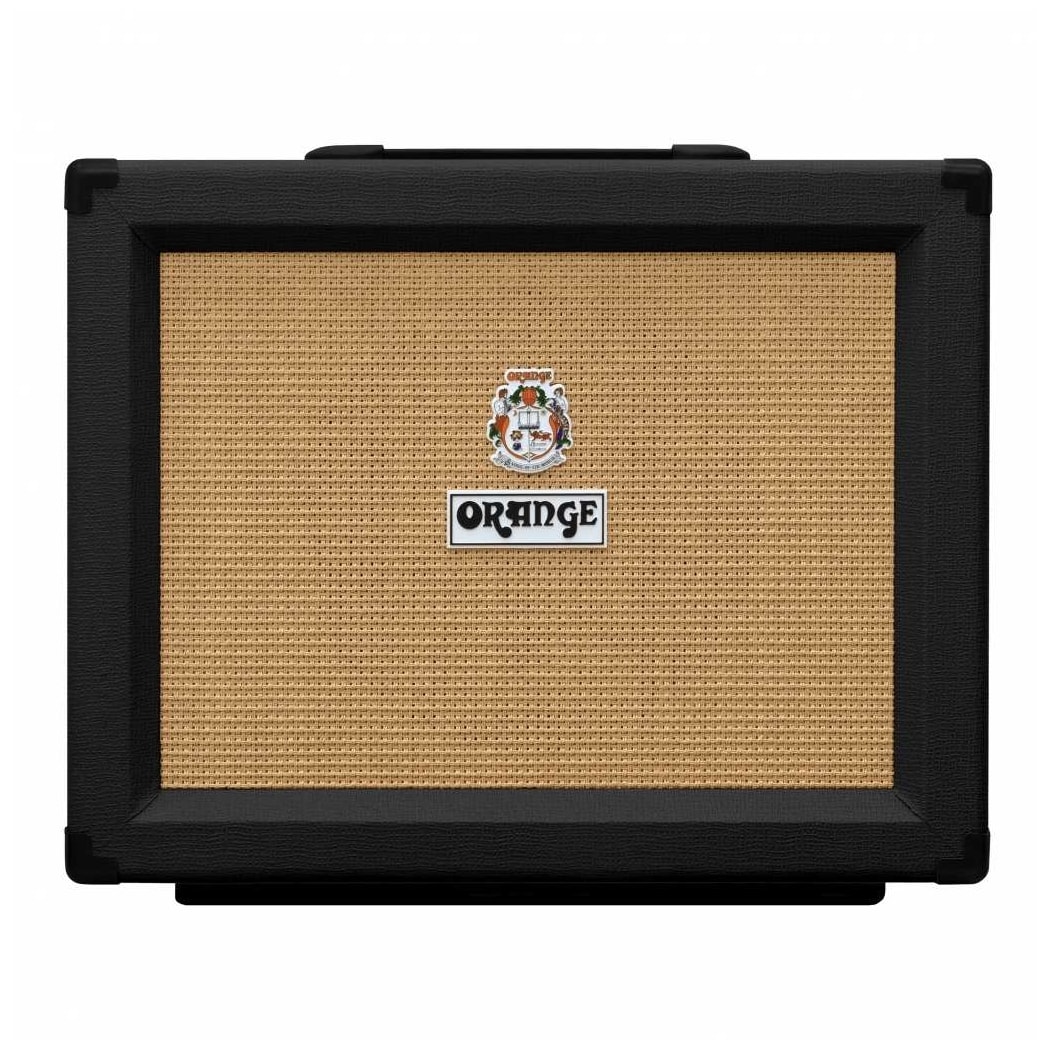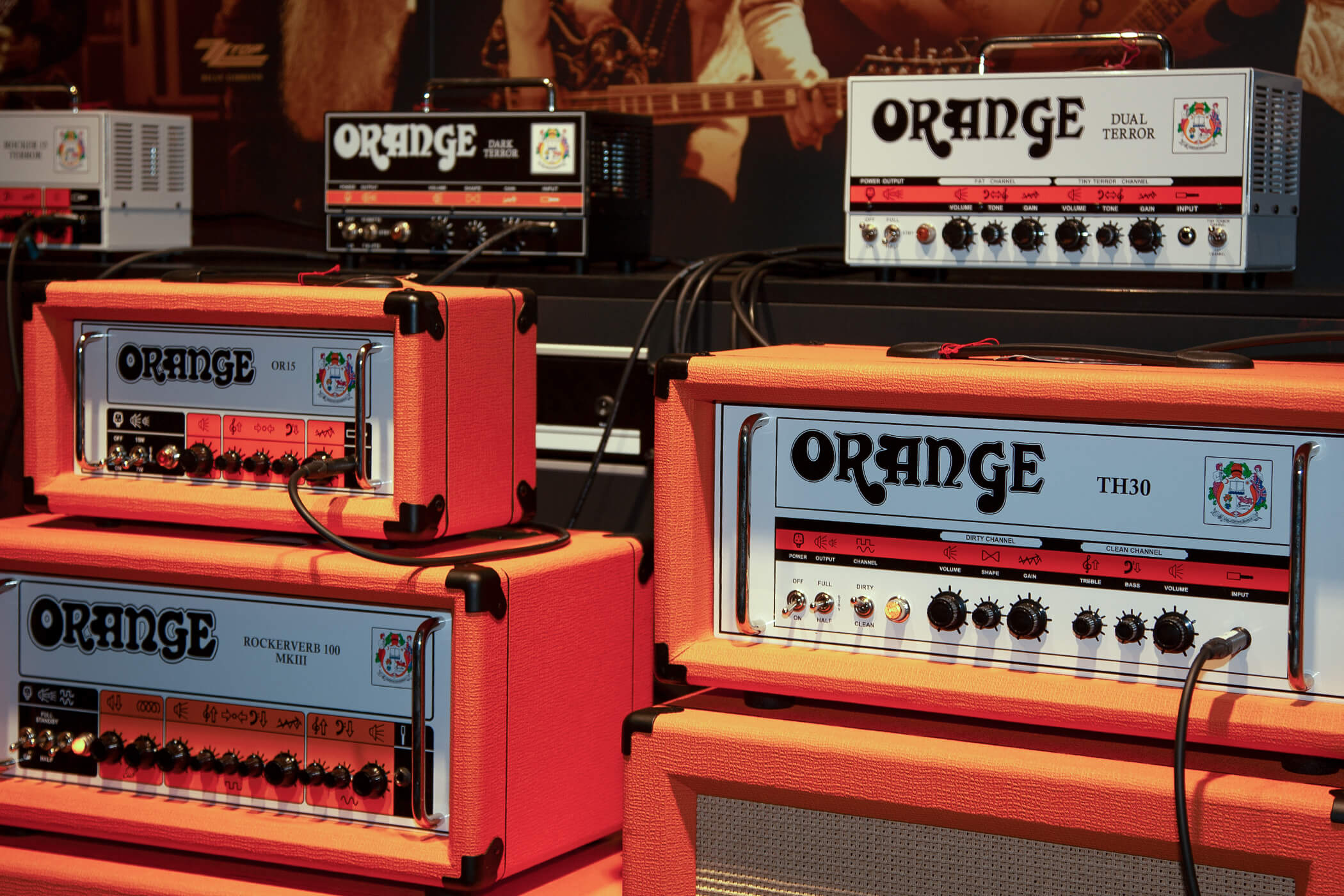

From a small music store to a global player
Orange Amplification was founded in London in 1968 by Cliff Cooper. The Brit had previously had initial success with the development of one of the first headphones preamplifiers. When the first Orange amplifier and speaker cabinets came onto the market in late 1968, their eye-catching color / finish and frame design of the amplifier cabinets and speaker cabinets marked a revolution in amplifier design. John Lennon, Eric Clapton, Keith Richards, Brian Jones, Paul Kossoff, Marc Bolan, Gary Moore, Peter Green, Noel Gallagher and many other famous musicians are dedicated fans of Orange amps and speakers. The British company has quickly developed into a real global player with numerous fans.
With us you will find a large selection of high-quality Orange products for every budget. From the Crush Combo to the Rocker head , there is something for every guitarist. If you are interested in the history of Orange Amplification, you can find more facts about the career of the British amp manufacturer in our product overview.
Popular series:
Browse now
All articles from Orange
Orange Amplification 1968 to today
The company Orange Amplification was founded in London in 1968 by Cliff Cooper, who is still the company's CEO today. Cooper had already celebrated its first technical and commercial successes with a specially designed headphones preamplifier for electric guitars, the technology of which was also taken up and further developed by other manufacturers and made it possible to play the electric guitar at home without the neighbors bothered by it. Together with a few partners, he decided to open his own shop and sell amplifier, loudspeaker and other guitar accessories that he made himself.
The shop on New Compton Street
The opening of the Orange Shop on London's New Compton Street in September 1968 marked the beginning of a completely new approach to musical instrument retailing. For the first time, a shop focused on just one, then unknown, brand. To make the shop recognizable from afar, Cliff Cooper decided to paint it a bright Orange , both inside and out. This is where the name of the company and its product line comes from. The psychedelic flower power logo was also created when the shop opened and was painstakingly hand-painted several times over the shop windows. The ground floor was reserved for retail sales of Orange products and second-hand guitars, while the first floor served as a recording studio for Orange Records.
John Lennon, Eric Clapton, Keith Richards, Brian Jones, Paul Kossoff, Marc Bolan, Gary Moore, Peter Green and many other famous musicians visited the store. They sat around chatting and playing guitar as long as they wanted - most other stores wouldn't have tolerated that.
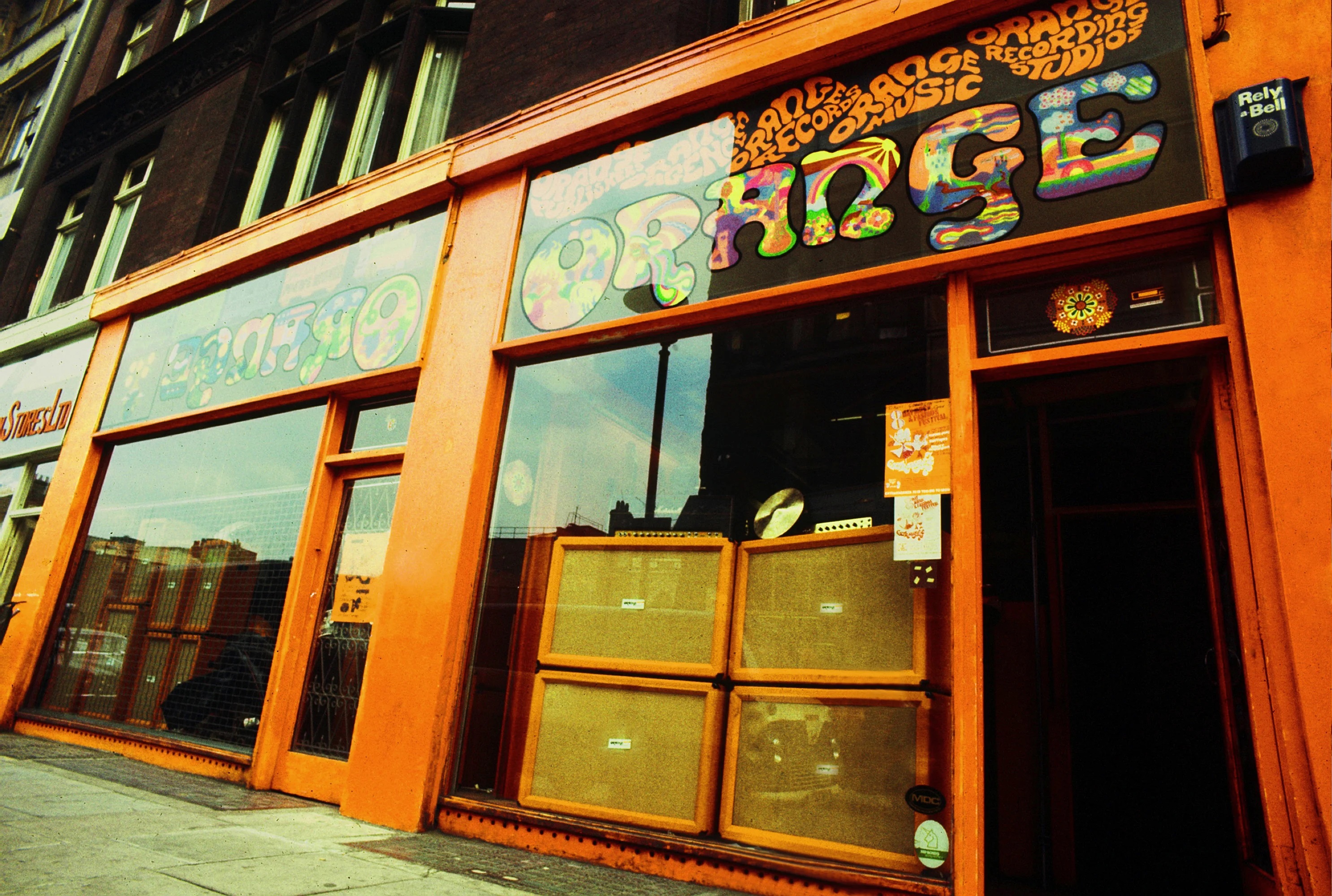
In late 1968, Fleetwood Mac became the first band to use Orange amplifier on stage. At this time, musicians began to prefer older, used or worn guitars as they felt they were of better quality and had more character than those available new. The Orange Shop was the first to serve this new second-hand market. It remained open until 1979, when the entire building on New Compton Street was demolished.
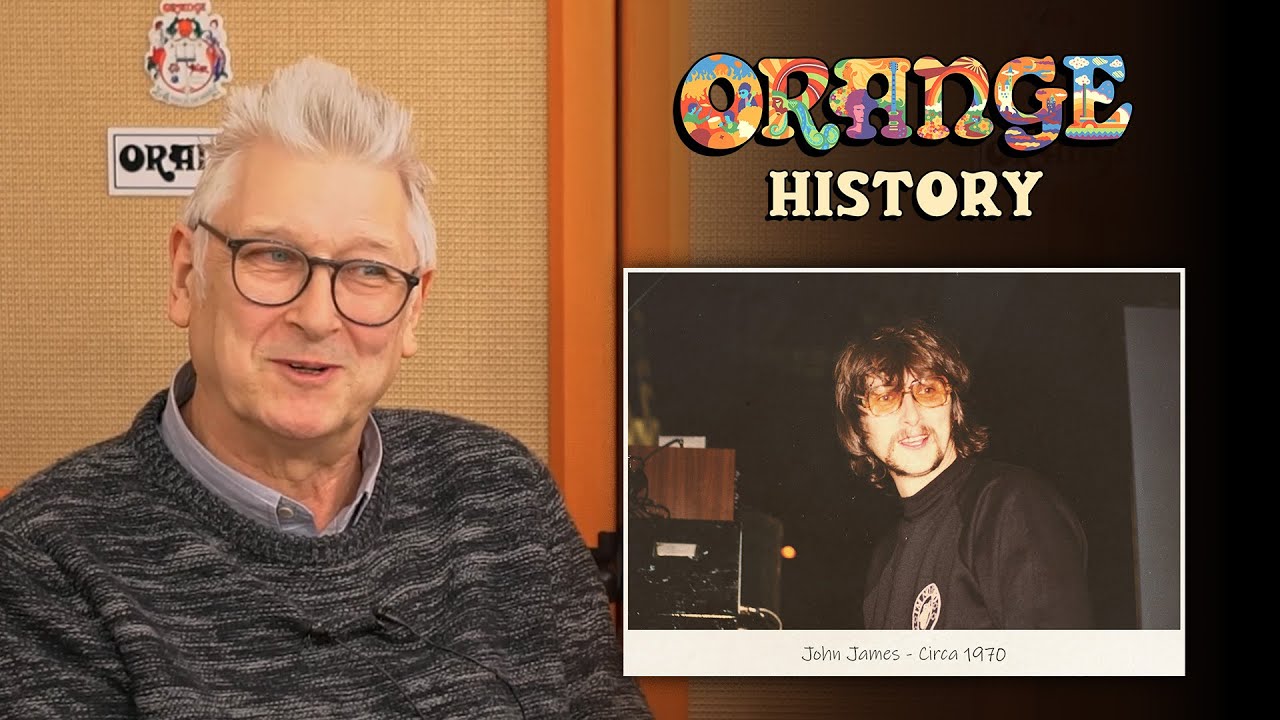
The Graphic Valve Amplifier
What is now known as the Orange Signature sound began in 1971 when the company developed the "Pics Only" graphic amplifier with its unique hieroglyphic symbols and distinctive warm and crisp sound . The "Graphic Valve Amplifier" was developed by John James in 1971 and manufactured at the Orange factory in Bexleyheath from 1972 to 1975. It was soon nicknamed 'Pics Only', a nod to the then unique front panel graphics. Some Pics Only were manufactured and sold until 1975 - most notably the Slave 120 Graphics - to use up stock and components . These amplifier are considered to be the model for the graphics on most modern Orange amplifiers. You can find out more about the creation of the 'Pics Only' amp in the video for which the inventor John James was interviewed.
Gibson meets Orange
Production at Bexleyheath ceased in 1979 when Orange was forced to close the factory. This was the direct result of two major overseas distributors going bankrupt within a short space of time. However, Cliff Cooper continued to build and sell Orange amplifier in small quantities throughout the 1980s. In 1993, Gibson licensed the name to produce Orange Amps. As the original Orange factory had closed, Gibson decided to have its Orange amplifier manufactured by Matamp in Huddersfield as they wanted to retain the "Orange - Made in England" identity. The first Gibson-era Orange re-releases were the Graphic 120 and overdrive 120 in 1994, followed by the Graphic 80 and overdrive 80. However, Gibson failed to achieve great commercial success, so the rights to the Orange Amplification name returned to Cliff Cooper in 1997.
New millennium, new products
In the following years, numerous Orange products were introduced that are still very popular today. In order to make the Orange sound accessible to price-conscious guitarists and beginners, we looked for a way to produce more cheaply without sacrificing sound and manufacturing quality. This was the birth of the Crush 10, 15 and 15R. Of course, these three inexpensive, bluesy-sounding entry-level combos still had the basic Orange core values of distinctive sound, reliability and value for money. Further Crush models followed in the years that followed. Some time later, the Rockerverb, which you can hear in the video below, the Rocker and the Thunderverb 200, all of which can still be found in today's Orange line-up, also saw the light of day. Effect devices now also belong to the Orange family.
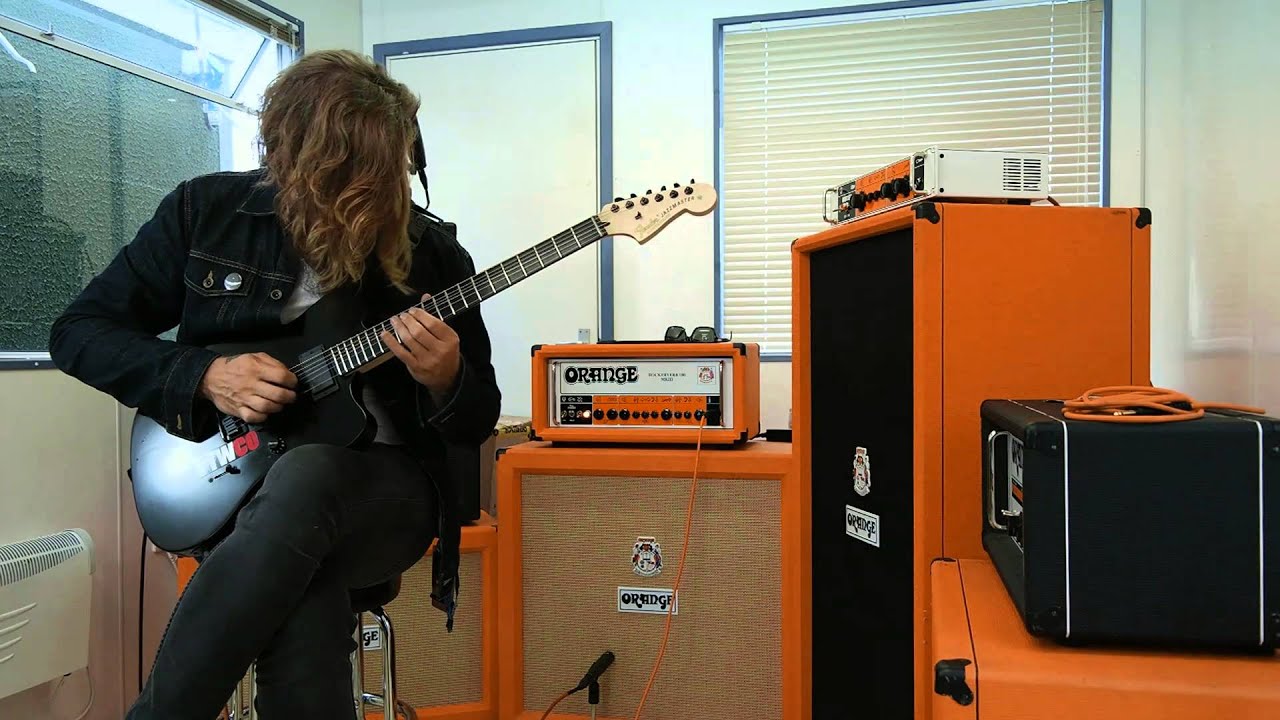
50 years of company history
Since then, the company's massive investment has gone into the research and development of transformers, the design and features of the Tiny Terror range and, more recently, the design of the Isobaric bass speaker enclosures, three very different products derived from one and the same approach result: namely that the Orange brand will always be about the future.
In 2018, Orange Amplification celebrated 50 years of company history and, based on their continued global success, it is safe to assume that the British amp manufacturer has many more years and innovations ahead of them.
 Trusted Shops: 4.84/5,00 (10085)
Trusted Shops: 4.84/5,00 (10085)

